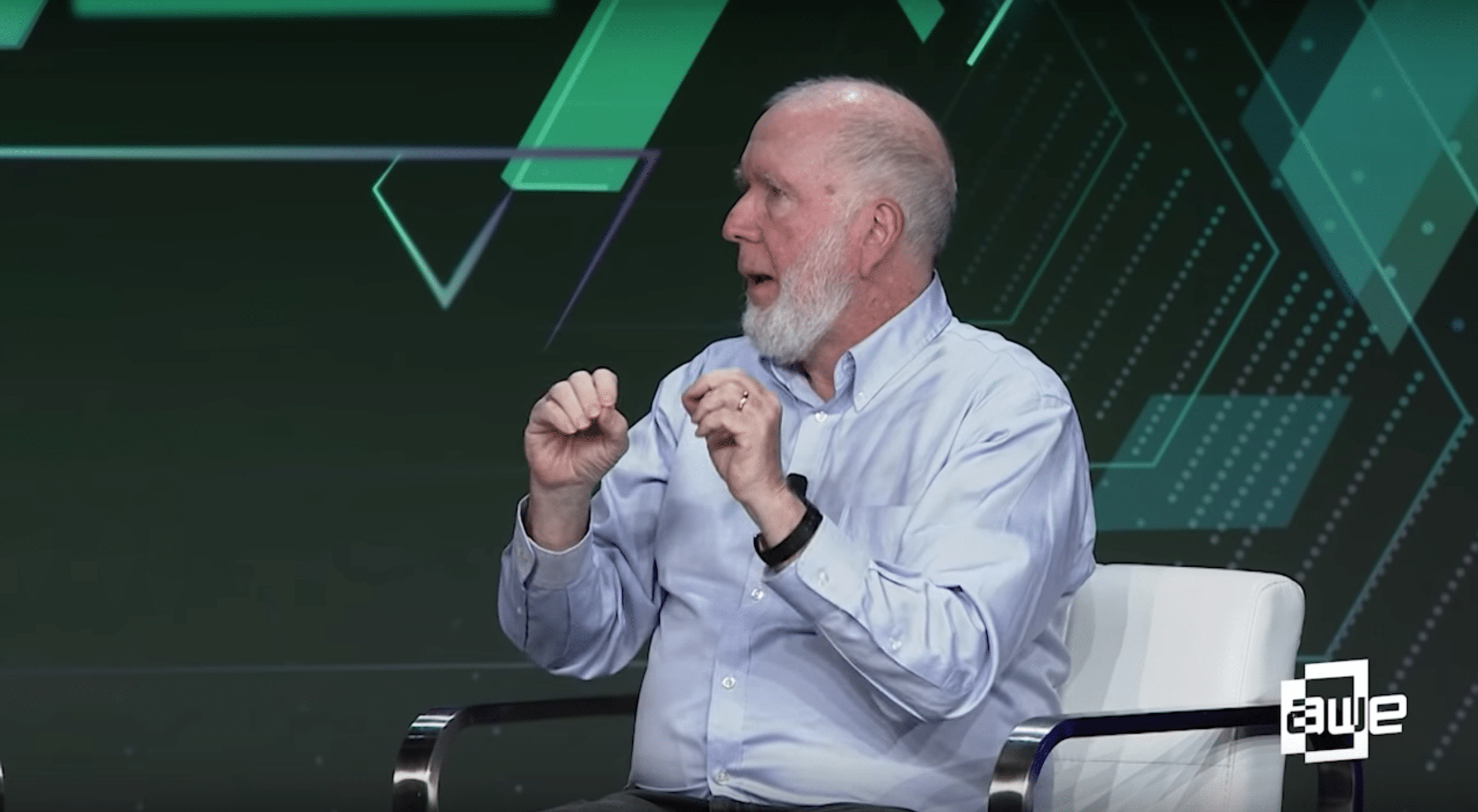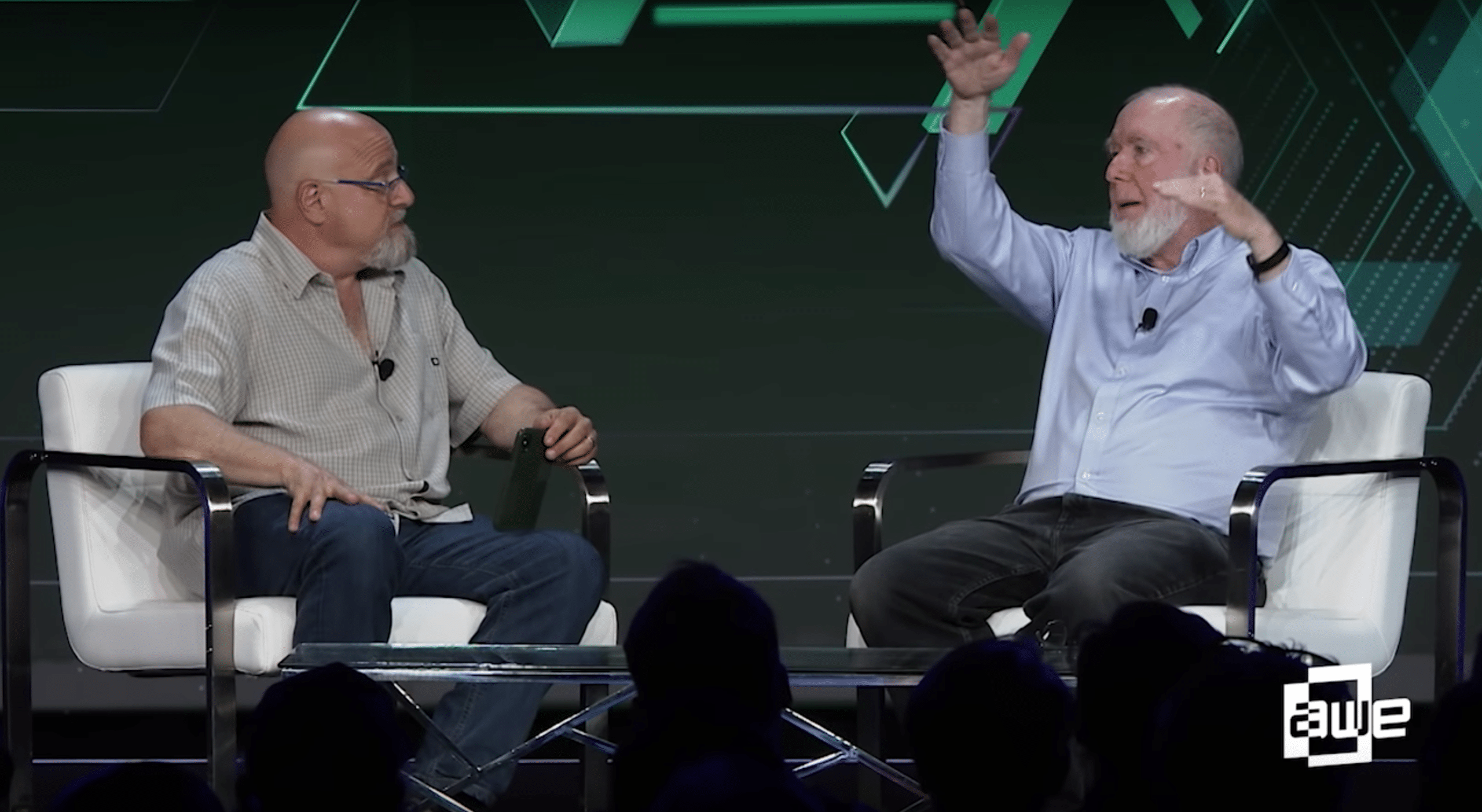
XR Talks is a series that features the best presentations and educational videos from the XR universe. It includes embedded video, as well as narrative analysis and top takeaways. Speakers’ opinions are their own.
Back in March, Wired Magazine co-founder Kevin Kelly wrote a cover story about the Mirrorworld. It built on the idea that Ori Inbar first coined as the AR Cloud. But he added some color and, more importantly, exposed it to a broader audience beyond the still-nascent AR sector.
Just like the AR Cloud, mirrorworld is a sort of invisible digital layer of data that’s spatially anchored to relevant objects and places. Once in place, it can activate AR sequences and feed AR devices with the right data to do their thing. It will blanket and “mirror” the physical world.
To further break it down, Kelley spoke at May’s AWE conference in a fireside chat (video below). Opposite to him on stage was the right guy to run such a dialogue: Mr. “paint the world with data” himself, Charlie Fink. And first on the list of topics… What is this mirrorworld thing?
“Mirrorworld is a one-to-one map of the real world that’s in digital form,” said Kelly. “That is, there’s a digital skin right over the real world that can be revealed using AR. It’s at the same scale and in the same place, so it’s a skin. Or you could say it’s a ghost or it’s embedded in the same way.”

The ghost analogy is related to the mirrorworld’s component parts: “digital twins.” These are essentially 3D digital representations of physical objects. They’ve been around for a while in CAD files for product design and manufacturing specs. All manufactured goods have them.
“Every piece of equipment, every helicopter that’s made, has a digital twin somewhere,” said Fink. “When it’s repaired, when it’s altered, the digital twin is annotated accordingly so that there’s always, through the entire lifecycle of that machine, its mirror image that followed its trail.”
This means that part of mirrorworld’s infrastructure is already in place. And it takes the concept from manufactured goods to people, places and things. Digital twins can then become the skeleton for all kinds of AR skins — be they for commerce, entertainment or social interaction.
“Houzz and others have catalogs of household goods, and most things originate as a digital entity,” said Kelly. “So digital twins kind of exist already, but they aren’t being used in that same way. They’re being used to produce something, but they can be moved into this mirrorworld.”

To put mirrorworld further into perspective, Kelly explains how it follows a progression of networked technologies. First there was the web which linked digital information. Then social media linked people digitally. Mirrorworld will link the physical world in conceptually similar ways.
“The third platform, which is what we’re making with mirrorworlds, is [to] digitize the real world,” he said. “You’re going to basically scan everything including objects, and put it into that world. The main thing is that it makes the world machine-readable, so you could search the real world.”
If this sounds familiar, it’s basically the concept behind the internet of things. After all, IoT and AR go together. The difference is that IoT requires physical objects to have a power source, whereas mirrorwold posits that they’re sensed visually and connected based on spatial orientation.
“Probably everything isn’t going to necessarily have power and be connected, but the mirrorworld we’re describing offers a way to connect all the objects, say, in this room in a different way,” said Kelly. “They’re being scanned and you’re using AI to segment and to isolate them.”

As for how all that scanning will happen on a global scale, Kelly is in the 6D.ai camp in believing that the effort will have to be crowdsourced. And that will require incentivizing users to pull out their phones and scan spaces, which could happen in the background as they’re using AR.
“The way I say this one-to-one digital version of the world is going to be created is by the users,” he said. “You are mapping it by using it, so the more you use it the more you’re mapping and remapping. So I think it’s going to be created and maintained and updated by people using it.”
Mapping leads directly to the question of who will own all that scanned data. Is it the app? the OS? the network (get ready for more ridiculously long TOS)? As we’ve asserted, it will likely be like the web, which has owned/gated areas but is interoperable with common protocols like https.
“Certainly there are some big web companies, but the web still is a place where anybody can set up a web page and you don’t have to ask permission,” said Kelly. “So I think the answer is probably [that] we’ll have something similar, where there should be some basic protocol.”

Beyond the who, what, how and where… what about the when? Kelly believes that full-blown mirrorworld won’t be here for another 25 years. It will require a hardware base of wearable AR devices, followed by all of the above mapping and content creation… and that will take a while.
“I think that’s the standard future stuff that people overestimate how fast things are going to happen and underestimate the consequences,” he said. “Don’t confuse a very clear view of the future with a short distance. This is a long way away, even though we can see it very clearly.”
For deeper XR data and intelligence, join ARtillery PRO and subscribe to the free AR Insider Weekly newsletter.
Disclosure: AR Insider has no financial stake in the companies mentioned in this post, nor received payment for its production. Disclosure and ethics policy can be seen here.
Header image credit: AWE
